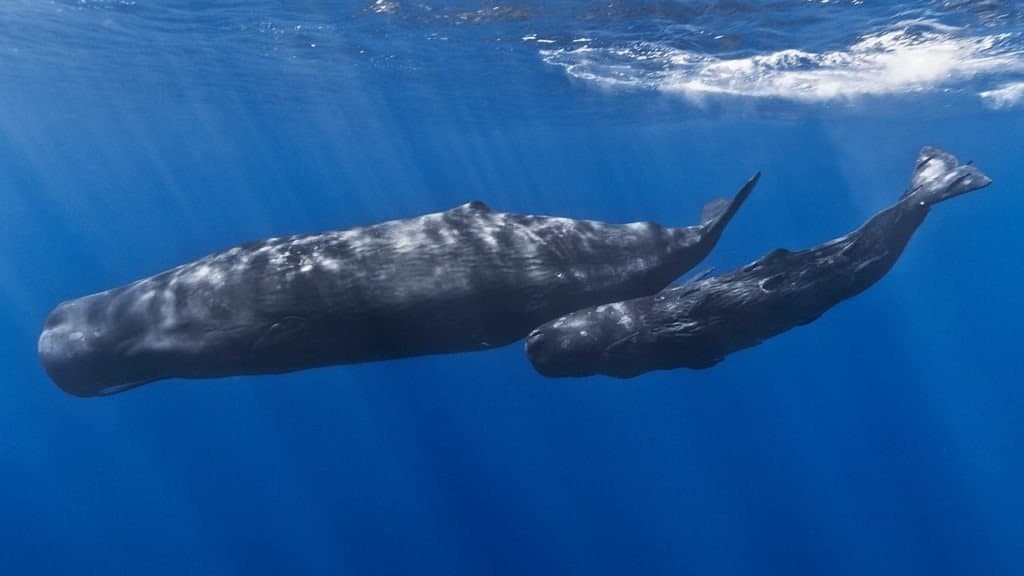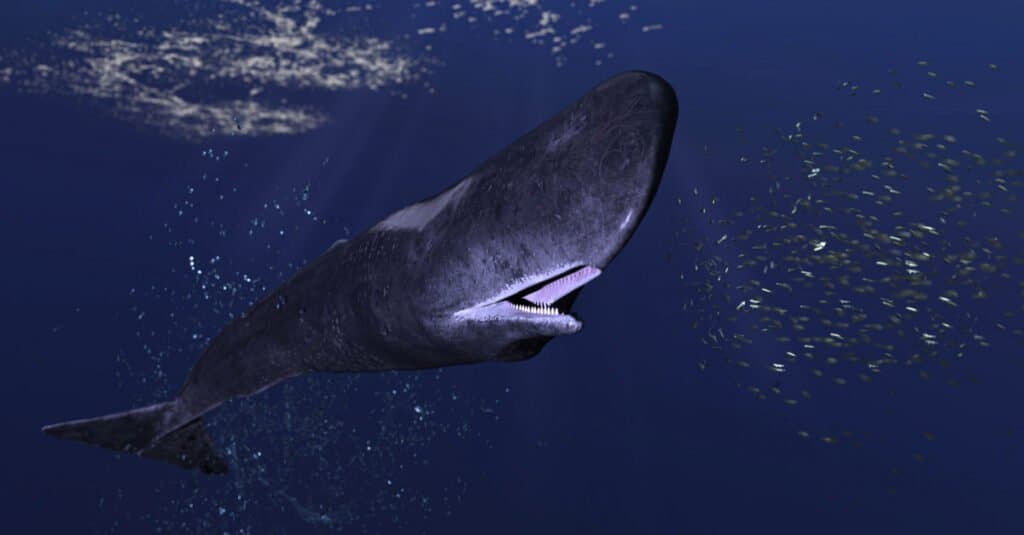The humpback whale and sperm whale are very similar creatures. They are very alike in the sense that they are closely related in size, they are both carnivores, and they both dwell in very similar habitats. Besides, they both belong to the order Artiodactyla. If you are not a whale expert, you might not be able to differentiate between these two gigantic creatures. Let’s explore the major differences between a humpback whale and a sperm whale.
Comparing a Humpback Whale and a Sperm Whale

| Humpback Whale | Sperm Whale | |
|---|---|---|
| Scientific Name and Family | Belongs to the Balaenopteridae family | Belongs to the Physeteridae family |
| Size | Length: around 48 ft to 62 ft Weight: 40 to 100 tons | Length: around 49ft to 59ft. Weight: 35 to 45 tons |
| Color | They are usually black or grey | They are mostly dark grey |
| Diet | They mainly feed on small schooling fish and krill | They have a vast range of food like octopuses, colossal squid, etc |
| Distribution | They have a near cosmopolitan distribution | They also have a near cosmopolitan distribution |
The Key Differences Between a Humpback Whale and a Sperm Whale.
The key differences between a humpback whale and a sperm whale are their family, their size, appearance, diet, and their habitats. Sperm whales are usually smaller than humpback whales. Besides, the sperm whale has a general lifespan of 60 years while the humpback whale has a lifespan of 45 years to 50 years.
Let’s explore the key difference between these species in-depth:
Humpback Whale vs Sperm Whale: Size
Adult humpback whales generally grow from about 48 ft to 62 ft, although longer lengths have been recorded over the years. Quite interestingly, female humpback whales tend to be slightly longer than males. Humpback babies are born around 14 ft in length and weigh about 1.5 tons.
Sperm whales grow from 49 ft to 59ft. The largest, longest sperm whales grow to 68ft and can weigh up to 45 tons. There are special cases of pygmy sperm whales. They are abnormally small sperm whales that only grow up to 11 ft and weigh just 900 lbs. This seems like such a small size for a whale but in reality, it is not so small.
Humpback Whale vs. Sperm Whale: Color and Physical Appearances

Sperm whales are the largest toothed whales.
©Gabriel Barathieu / CC BY-SA 2.0 – License
Humpback whales are usually black or grey in color, but they have white underbellies, flippers and flukes. They have really robust bodies and long flippers. They also have a bunch of grooves that stretch from their lower jaws to their navels. Their dorsal fins are relatively small, and they vary in shape. Humpbacks are baleen whales and they don’t have teeth. Instead, they have about 200 to 400 baleens in place of teeth.
Sperm whales are usually dark grey, but some species are lighter. They usually have white on their underbellies too. Sperm whales are known as the largest of the toothed whales. They have 36-60 teeth in their lower jaw. However, their upper jaw is toothless. The sperm whale has a unique body with a block-shaped head and an S-shaped blowhole located close to the front of the head. Instead of a dorsal fin, the sperm whale has a bunch of ridges on its back.
Humpback vs Sperm Whale: Diet and Feeding

Humpback whales are carnivores that eat krill.
©Claude Huot/Shutterstock.com
Both humpback whales and sperm whales are carnivorous in nature.
Humpback whales carry out their feeding from spring to fall. They have a general diet and mostly focus on schooling fish and krill. The Antarctic and northern krill are the preferred species (maybe they are so delicious).
Sperm whales take their feeding seriously and dive very deep to hunt for food; they could hunt for over an hour. They feed on different sea creatures like the colossal squid, octopuses, giant squid, and big fish like sharks. Sperm whales prefer to feast on medium-sized squids anyway.
Humpback vs Sperm Whale: Distribution
Humpback whales have a cosmopolitan distribution. However, they are not present in some parts of the High Arctic and some enclosed seas. These species can not be pinpointed to one location because they live in oceans around the whole world. They have the longest migration of any known animal because they travel very far distances yearly.
Sperm whales are also one of the most cosmopolitan species. They love ice water and are usually seen along the coastal waters of Southern Australia. They also live in the Arctic and Antarctic waters.
Humpback vs Sperm Whale: Reproduction

Female sperm whales reach sexual maturity at 9 years of age.
©bekirevren/Shutterstock.com
Humpback whales usually mate and breed during the winter seasons. These species are known for polyamory because both sexes usually have multiple sex partners. While the adult males reach the crest of their sperm level and testosterone, the females go through a process called estrus. Male humpback whales usually trail the female of their choice and they are called escorts. The male that is more fancied by the female is called the principal escort.
Sperm whales are polygynous. Their females reach sexual maturity around 9 years old while the males get to 18 years old. The males have to battle for the right to mate with the females, then they go ahead to mate with multiple women.
Generally, sperm whale lives longer than the humpback whale. The sperm whale has a general lifespan of 60 years, while the humpback whale has a lifespan of 45 years to 50 years.
The photo featured at the top of this post is © Imagine Earth Photography/Shutterstock.com
Thank you for reading! Have some feedback for us? Contact the AZ Animals editorial team.







